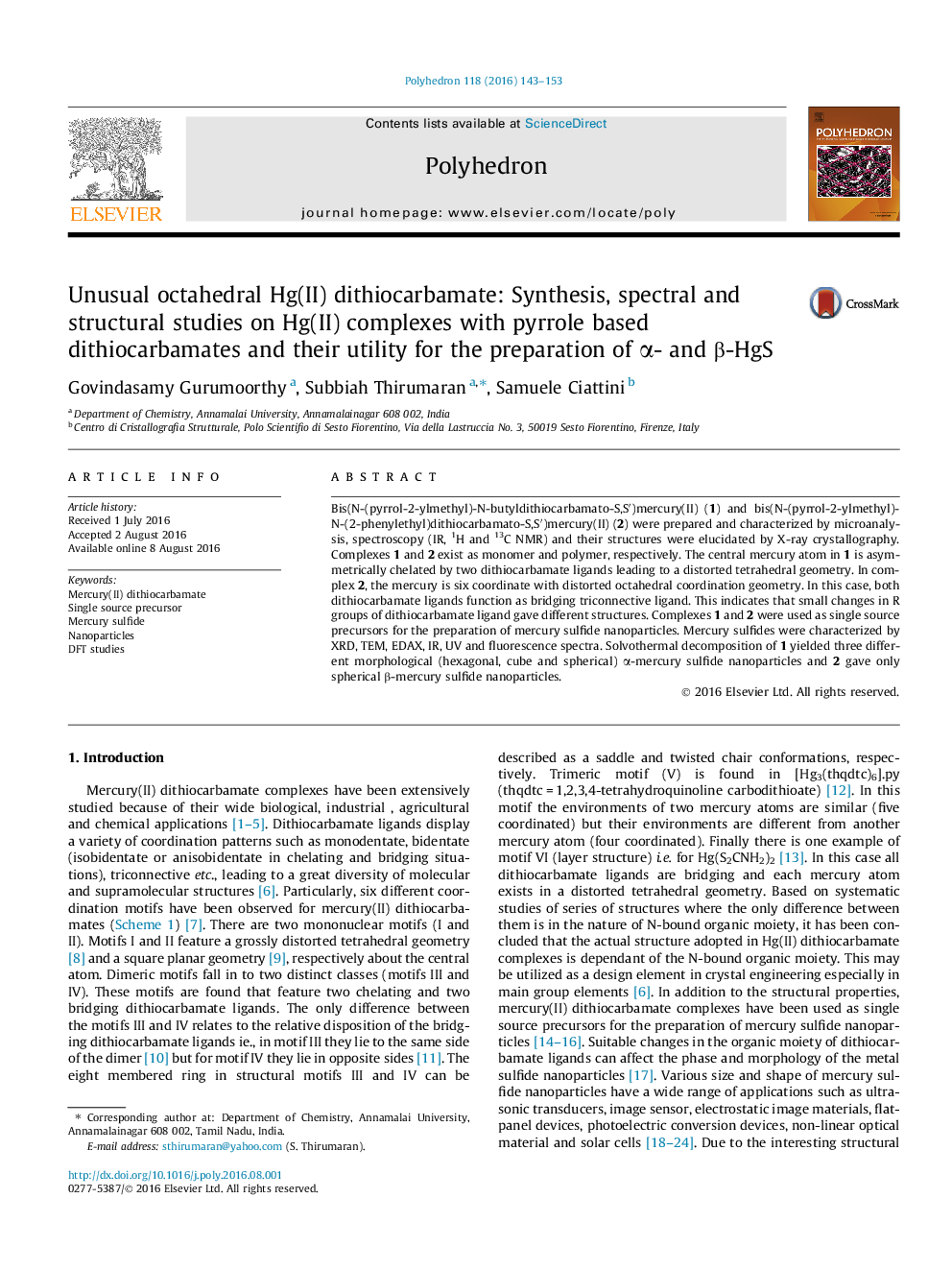| Article ID | Journal | Published Year | Pages | File Type |
|---|---|---|---|---|
| 1334228 | Polyhedron | 2016 | 11 Pages |
Bis(N-(pyrrol-2-ylmethyl)-N-butyldithiocarbamato-S,S′)mercury(II) (1) and bis(N-(pyrrol-2-ylmethyl)-N-(2-phenylethyl)dithiocarbamato-S,S′)mercury(II) (2) were prepared and characterized by microanalysis, spectroscopy (IR, 1H and 13C NMR) and their structures were elucidated by X-ray crystallography. Complexes 1 and 2 exist as monomer and polymer, respectively. The central mercury atom in 1 is asymmetrically chelated by two dithiocarbamate ligands leading to a distorted tetrahedral geometry. In complex 2, the mercury is six coordinate with distorted octahedral coordination geometry. In this case, both dithiocarbamate ligands function as bridging triconnective ligand. This indicates that small changes in R groups of dithiocarbamate ligand gave different structures. Complexes 1 and 2 were used as single source precursors for the preparation of mercury sulfide nanoparticles. Mercury sulfides were characterized by XRD, TEM, EDAX, IR, UV and fluorescence spectra. Solvothermal decomposition of 1 yielded three different morphological (hexagonal, cube and spherical) α-mercury sulfide nanoparticles and 2 gave only spherical β-mercury sulfide nanoparticles.
Graphical AbstractTwo Hg(II) dithiocarbamate complexes were prepared and characterized. Complexes 1 and 2 are monomer and polymer, respectively and the geometries around each mercury atom in 1 and 2 are distorted tetrahedral and octahedral, respectively. Complexes 1 and 2 were used as single source precursors for the preparation of α-HgS and β-HgS nanoparticles.Figure optionsDownload full-size imageDownload as PowerPoint slide
